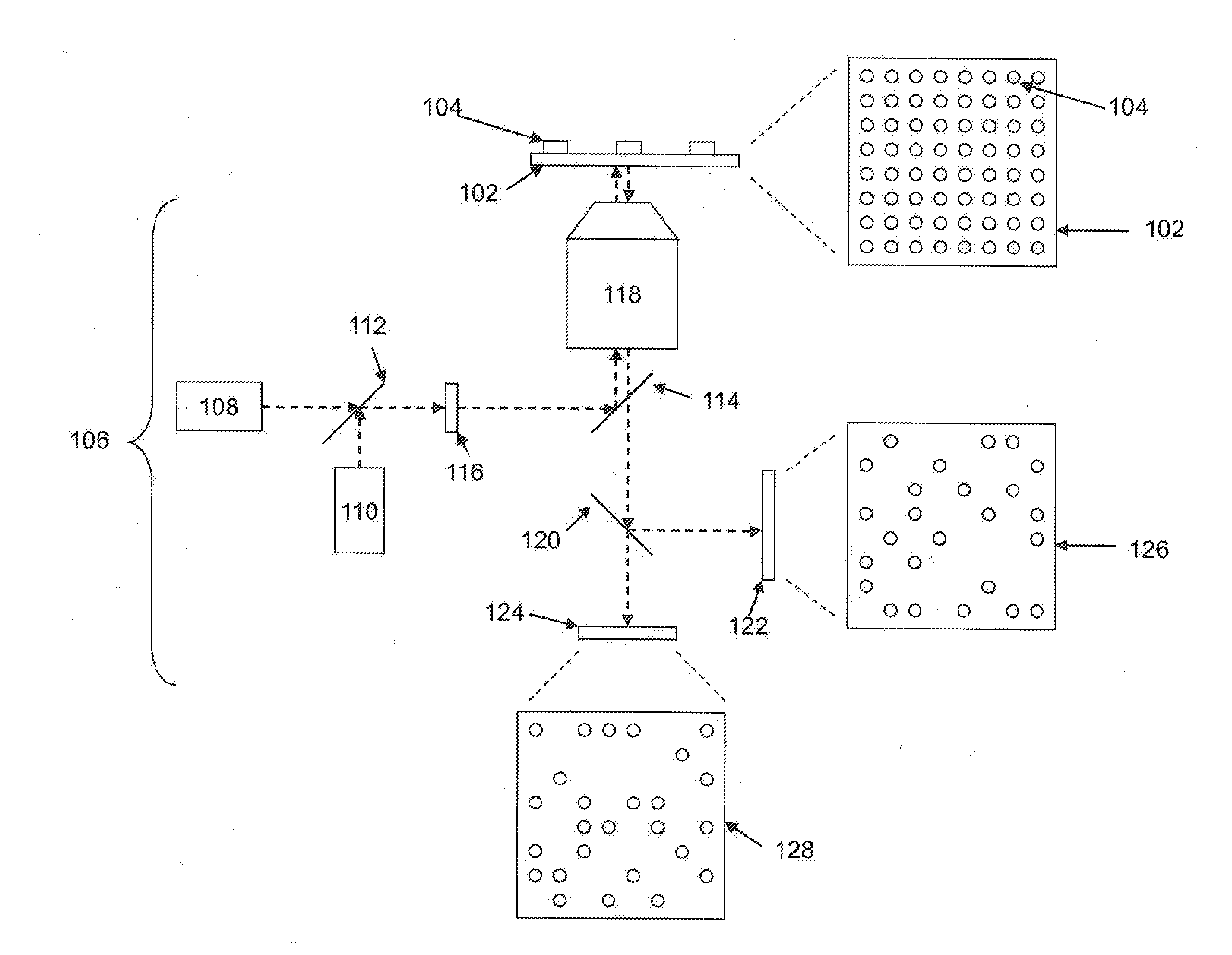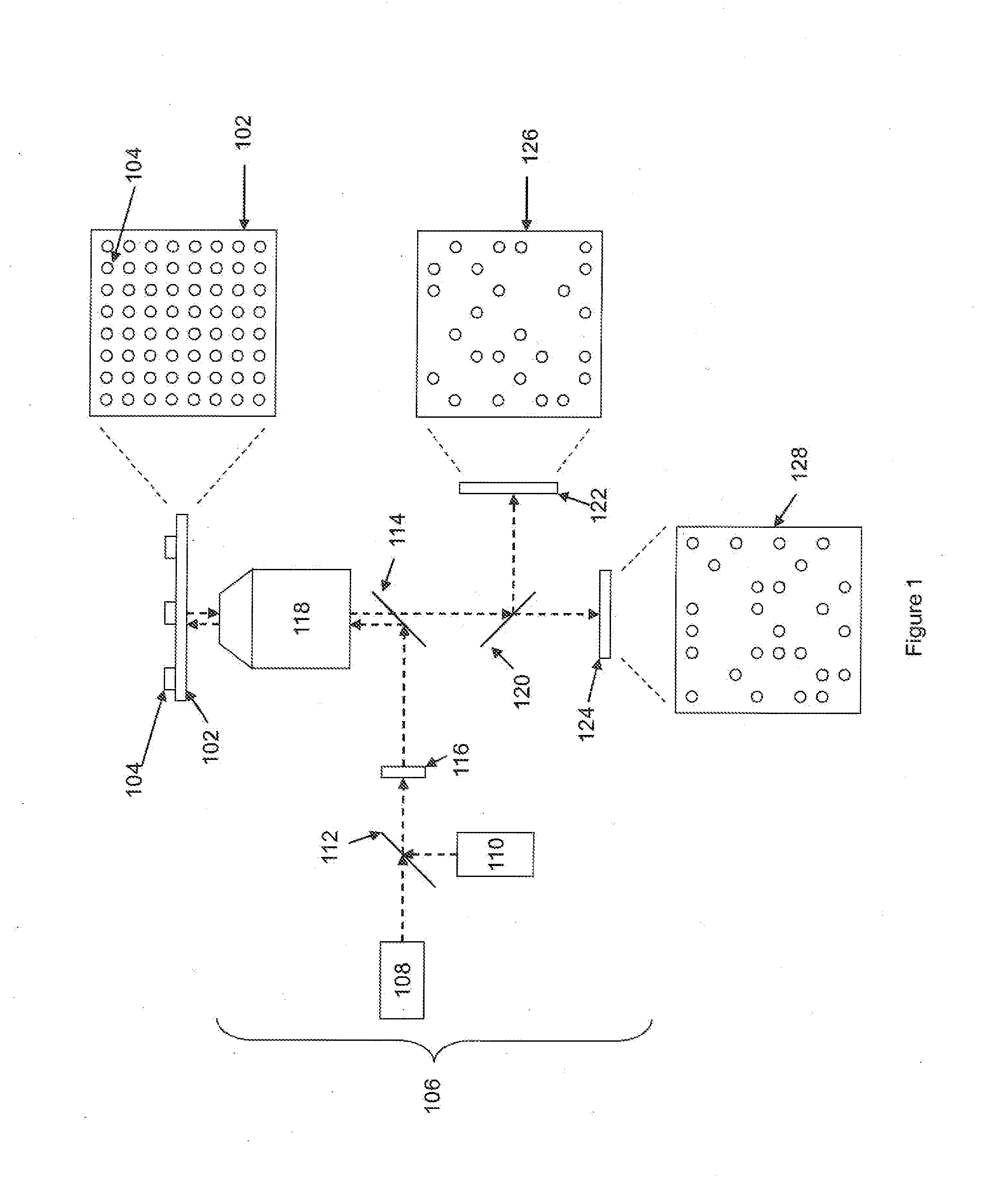Methods and systems for monitoring reactions
a technology of reaction and monitoring system, applied in the field of bioanalytical technologies, can solve the problems of unable to see potentially important events at the individual reaction level, affecting others, and often encountering limitations of how densely reaction complexes can be packed on the surfa
- Summary
- Abstract
- Description
- Claims
- Application Information
AI Technical Summary
Benefits of technology
Problems solved by technology
Method used
Image
Examples
Embodiment Construction
I. Single Molecule Detection
[0014]A. Generally
[0015]As noted above, the monitoring of individual reaction complexes, also referred to herein as single molecule reactions, typically involves observing a reaction complex that produces a detectable signal that is indicative of the reaction of interest. Such signals may include optically detectable signals, electrochemically detectable signals, thermal signals, mass based signals, or the like.
[0016]In particularly preferred aspects, optically detectable signals are used to monitor the reactions of interest. Through the use of labeling groups that have high quantum yields, one can provide a relatively large signal from a single molecule of reagent. Examples of such groups include, for example any of a variety of fluorescent organic dyes, such as fluorescein or cyanine based dyes. A large number of such dyes are known in the art and are generally available from a number of commercial sources, including, e.g., Cy 3 and Cy5 families of dyes...
PUM
| Property | Measurement | Unit |
|---|---|---|
| Fluorescence | aaaaa | aaaaa |
| Spectrum | aaaaa | aaaaa |
Abstract
Description
Claims
Application Information
 Login to View More
Login to View More - R&D
- Intellectual Property
- Life Sciences
- Materials
- Tech Scout
- Unparalleled Data Quality
- Higher Quality Content
- 60% Fewer Hallucinations
Browse by: Latest US Patents, China's latest patents, Technical Efficacy Thesaurus, Application Domain, Technology Topic, Popular Technical Reports.
© 2025 PatSnap. All rights reserved.Legal|Privacy policy|Modern Slavery Act Transparency Statement|Sitemap|About US| Contact US: help@patsnap.com



